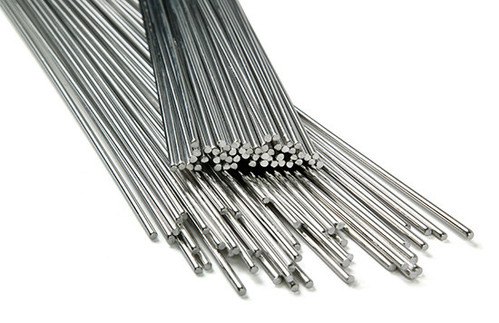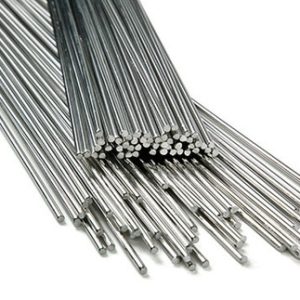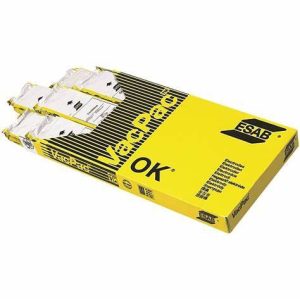| Weight | 2.5kg |
|---|---|
| Weld Metal Type | TIG Filler Metal |
| All Weld Material | Aluminium |
2.4mm ESAB OK Tigrod 4043 Aluminium Tig Rod | 2.5kg
£60.00 exc VAT
OK Tigrod 4043 is one of the most widely used welding alloys, and premium quality aluminium TIG filler rod. This 2.4mmmm ESAB 4043 grade alloy is used for welding AlMgSi and AlSi type alloys, with up to 7 % Silicon.
4043 produces a more aesthetically pleasing weld (rather than 5356 grade), and is easier to weld with. However, 4043 it is not recommended for structural work where strength is critical (5356 required), and not for anodizing. Non-Heat treatable.
Aluminium TIG filler rod guide
Part no. 180424R120
Should I use 4043 or 5356 filler alloy?
One of the frequently asked questions from most of the welders is – When should we choose one of these filler alloys over the other?
When the filler alloy selection chart allows the use of either 4043 or 5356 as filler for a specific base alloy, as a guide, we may wish to consider the following facts about each of these filler alloys:
- Colour match – 4043 should not be used if you are considering the best colour match after post weld anodising, as this filler alloy will typically turn dark grey after the anodising process. 5356 will provide a much closer colour match after anodising.
- Temperature – 4043 is suitable for service temperatures above 150 Deg. F, however, 5356, because of its 5% magnesium content, is not suitable for these elevated temperature applications.
- Ductility – 4043 has lower ductility (will crack easier) than 5356. This may be of some consideration if forming after welding is to be carried out.
- Shear Strength – 4043 has lower shear strength than that of 5356 (see Fig 1). This may be of consideration when calculating the size of fillet welds.
- Alloy softness – 4043 is a softer alloy in the form of spooled wire when compared to 5356. Typically, when MIG welded (Gas Metal Arc Welding – GMAW), feedability will become a less critical issue when feeding the more rigid 5356 alloy.
- Weldability – 4043 will typically provide a higher rating for weldability, and provide slightly lower crack sensitivity. 4043 will generally tend to produce welds with improved cosmetic appearance, smoother surfaces, less spatter and less smut. For this reason, it is sometimes more appealing to the welder.




Reviews
There are no reviews yet.